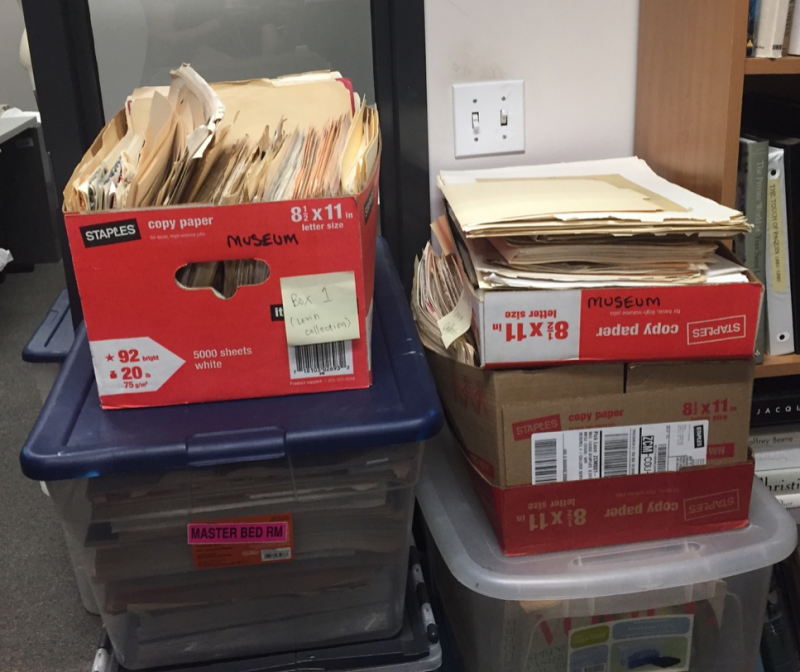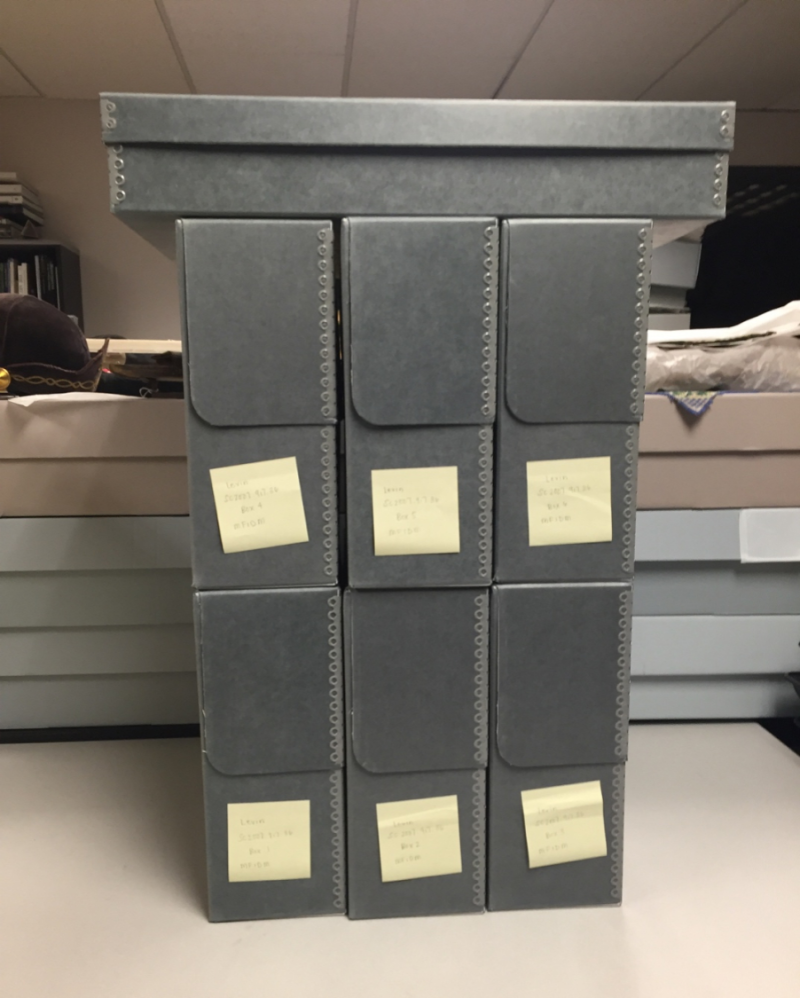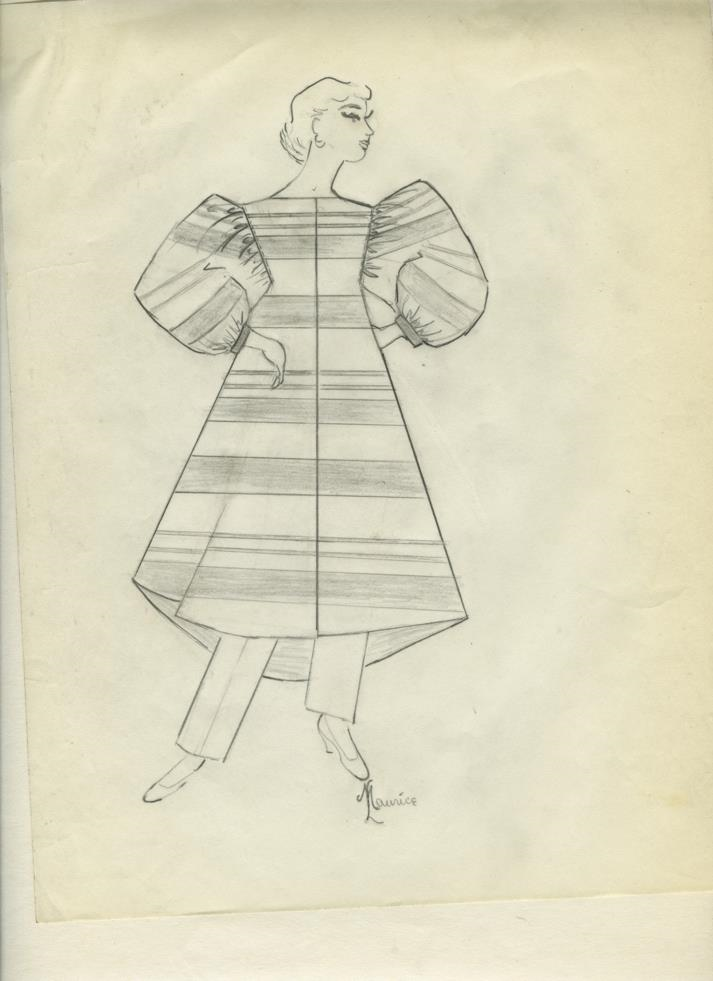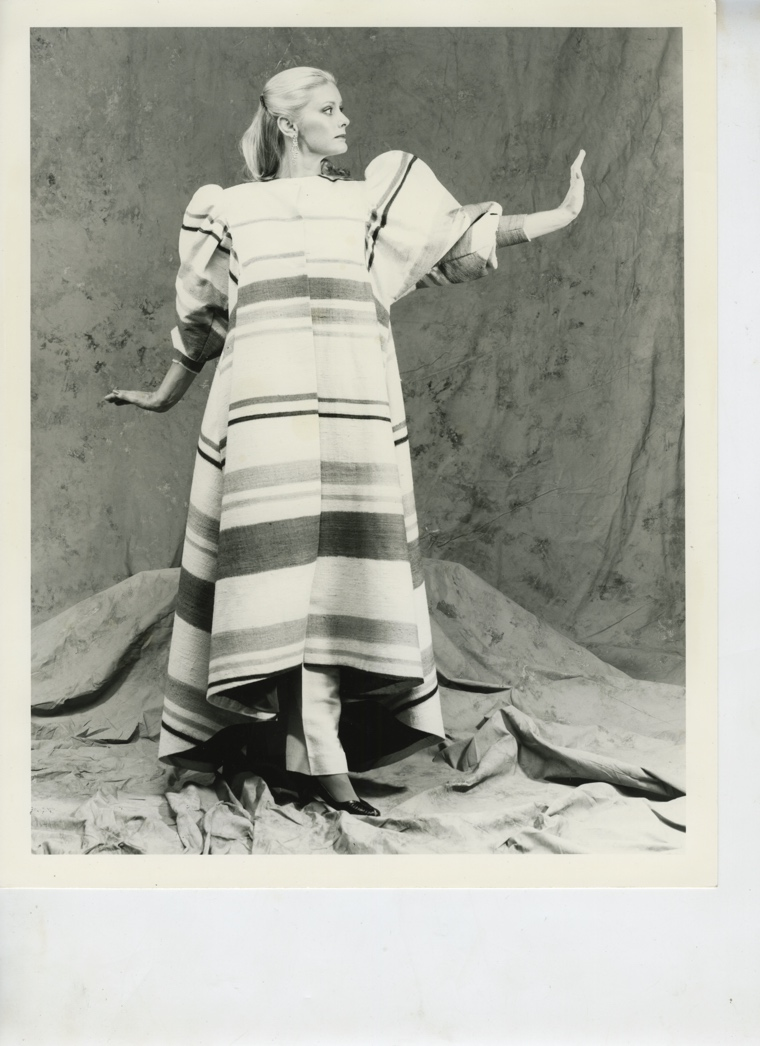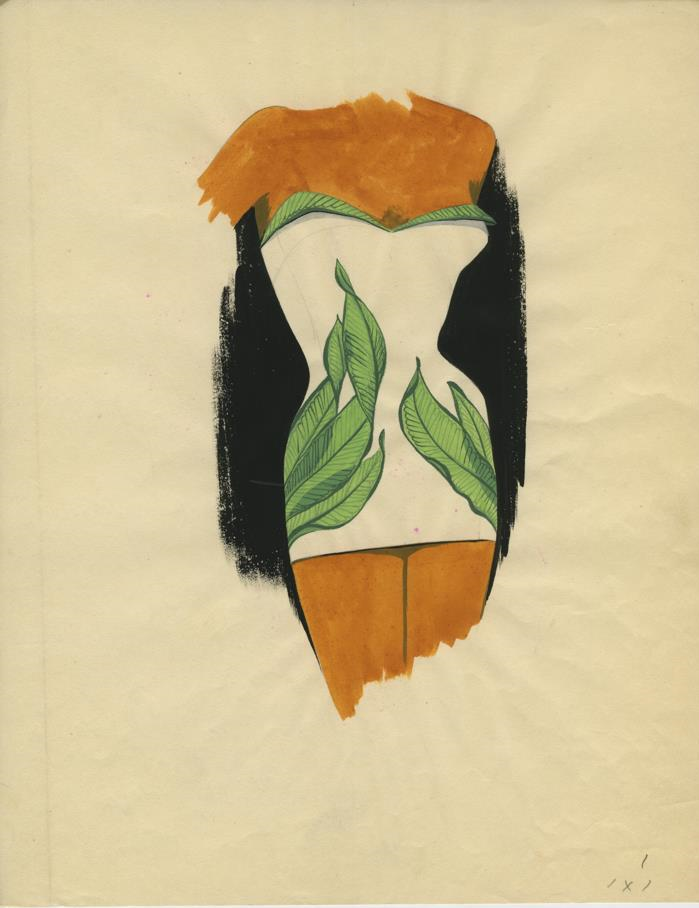Intern Report: Maurice Levin Archive
We love it when our interns can combine their passions with hands-on experience, so we were particularly happy to welcome archivist-in-training Sandy Lu to the FIDM Museum this summer. Sandy processed the Museum's Maurice Levin Archive, a collection of personal and professional papers belonging to a prominent mid-century California designer. Read on to learn how Sandy created an organized, accessible archive for future researchers to enjoy!
Sandy is currently a graduate student at UCLA pursuing her Master of Library and Information Studies (MLIS). She is interested in design history, pop culture, and the relationship between cultural institutions and public education.
****************************************************************************************************************
Think of mid-century California style, and you’re likely to think of bright and breezy leisurewear, surf culture, and the occasional Tiki motif.
Maurice Levin had something to do with that.
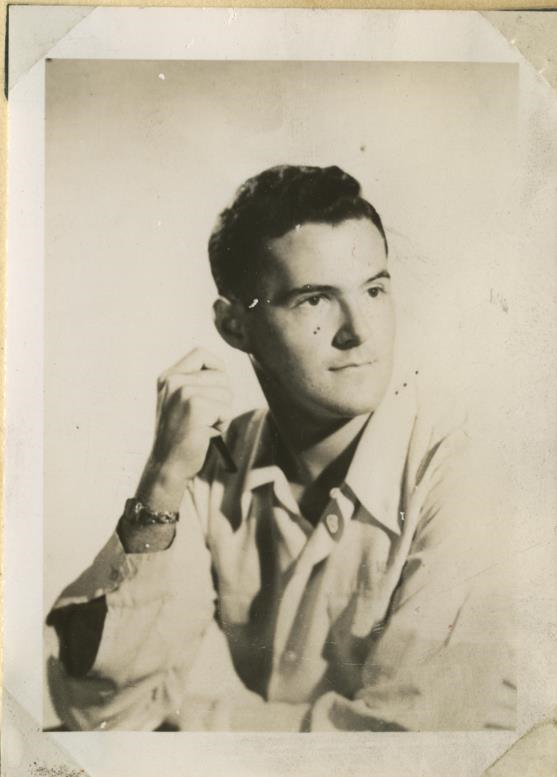
Maurice Levin, c. late 1940s
Maurice Levin Archive
Gift of Marsha Fagin in Loving Memory of Maurice Levin
SC2007.917.36
Born in 1926 to a dressmaker mother and a tailor father, Levin seems to have had fashion in his bones. After graduating from New York’s (now defunct) Traphagen School of Fashion in 1949, Levin headed west to Los Angeles. He enrolled at UCLA—which, at the time, did not have a design department—and graduated with a degree in Social Science with curriculum in Apparel Design. Early on, he worked in Hollywood costuming at NBC Television Studios and Western Costume Company.
Levin took one of his first professional fashion design jobs in the early 1950s, at the iconic Jantzen swimwear company. Originally hired as a womenswear designer, he eventually settled into a menswear design position at Jantzen. The popularization of the “pink for men” trend in the 1950s was one of Levin’s proudest contributions to the company.[1]
Levin continued to design men’s and women’s fashion throughout the 1950s, 60s, and 70s for brands such as Alex Colman of California, American Cyanamid, and, most notably, Catalina—where he was a two-time recipient of the Caswell-Massey award for design.
This summer, I had the chance to help process Maurice Levin’s personal and professional papers. Though much of his original organization was maintained, the collection was in need of some attention to help make it accessible to users.
As an archivist in training, I am frequently cautioned against the dated, inefficient processes that some archives might cling to—simply because it’s how it’s always been done. Gratefully, I encountered none of this at the FIDM Museum.
Because the FIDM Museum is a museum (rather than a traditional archive) and because the Museum’s collecting focus is generally on clothing and accessories (rather than paper artifacts), there were no rigid procedures by which to abide. Instead, I worked under the guidance of Associate Curator Christina Johnson to develop a method for processing the Levin Archive and all future archival collections that are given to the Museum. Together, we considered the research needs of FIDM Museum patrons, including design researchers, students, and fashion enthusiasts in general. We talked through how best to arrange the papers in a way that rendered them searchable by users, but still honored Levin’s original organization. We also discussed broader questions about the types of paper records that belong in the FIDM Museum’s collection and how they fit into the Museum’s mission. The Museum is actively building up its Special Collections—which includes things like rare books, magazines, fashion plates, photographs, and archival collections.
The opportunity to help define procedures and to offer direct input is rare for a student. This has been a unique and thrilling challenge, and I am extremely thankful for the experience.
The finished product is the Maurice Levin Archive—just as it’s always been, but tidier. Where there used to be three jumbled boxes of folders, there are now four discrete series: Sketches, Design Inspiration, Business, and Biographical. The collection has been neatly re-housed in seven archival boxes and organized chronologically. Selections have been digitized. An in-depth finding aid was also created as a companion piece to the physical collection, and is intended to help users locate and identify materials in the collection, to illuminate the history of the collection and of Levin himself, and to draw connections between the Levin Archive and other materials in the Museum’s collection.
Through the project, I found myself delighted by Levin’s playful designs, cheerful inspiration, and friendly correspondences. His quirky warmth comes through most clearly when he offers some advice for young designers: “Don’t look through fashion magazines to see what everybody else is doing. Go to a museum, have a nice lunch, then go to the book shop and go through the different books and see what you can use...”[2]
Seeing Levin’s sketches reflected in brand catalogs and, conversely, seeing the inspirational clippings he kept reflected in the fashions he created leaves me feeling like I knew Maurice Levin. However, as Verne Harris says, archives can only offer a “sliver of a sliver of a sliver.”[3] In other words, archives can only tell a part of the story. They cannot (and should not presume to) reflect a whole picture of any person, place, thing, or event.
That, I’m sad to say, is true. We can never replicate Maurice Levin or his immense talent. That being said, I am happy to have gotten a glimpse of the whimsical and vivacious Mr. Levin through what he left behind—and I am excited to share his legacy with the FIDM Museum community.
[1] Maurice Levin Oral History, Conducted by LACMA, 2001.
[2] Maurice Levin Oral History (page 14), Conducted by LACMA, 2001.
[3] Verne Harris, “The Archival Sliver: Power, Memory, and Archives in South Africa,” Archival Science, published 2001, http://www.nyu.edu/pages/classes/bkg/methods/harris.pdf.
